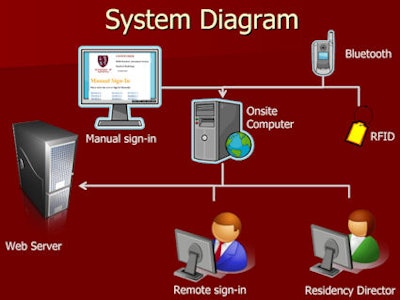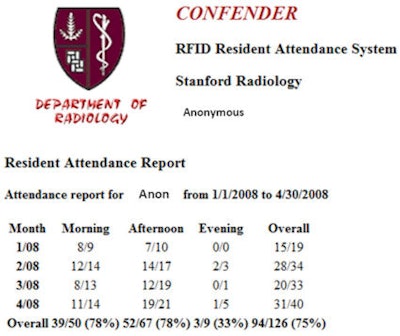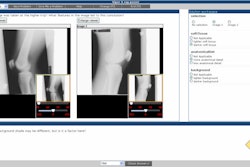
Stanford University has found a high-tech way to maintain compliance with rules covering continuing medical education for residents: an automated attendance monitoring system using radiofrequency identification (RFID) technology. Based on the institution's experience, the system can help relieve paperwork headaches for residency program directors.
The Accreditation Council for Graduate Medical Education (ACGME) requires that residency program directors maintain detailed records of residents' attendance at conferences, an often time-consuming process. Stanford researchers found that their RFID-based system helps compliance with ACGME requirements without the hassle of maintaining paper records.
Bhargav Raman, currently a second-year medical student at Stanford in Palo Alto, CA, and one of the system's co-inventors, explained how the system works in a poster presentation at RSNA 2008.
The paper-free system was developed at the request of Dr. Terry Desser, a radiology residency program coordinator, who envisioned a low-cost, easy-to-use system that would automatically create attendance records in several formats. Implemented in October 2006, the system has accurately monitored the attendance of 45 residents at almost 600 conferences.
A computer located in the radiology residents' main conference room contains an RFID tag reader (Phidgets, Calgary, Alberta). Residents carry a keychain, credit card, or sticker containing a batteryless RFID chip with a short-range antenna powered by the radiofrequency energy emitted by the reader; the residents wave the chip at the computer upon entering the conference room. To prevent radiofrequency interference with other hospital equipment, these devices are all RF-silent until they come within range of the computer.
 |
| All images courtesy of Stanford University School of Medicine. |
Residents who forget their RF device can manually record their attendance by selecting their name on the computer screen, or by accessing the list remotely via the Internet for up to 14 days following the conference date.
Attendance reports can be generated for individual residents, a subset of residents, or by individual conference. The software is designed to ignore scheduled conferences that are not held on the specified date.
 |
| Sample attendance report. |
The only administrative requirements of the system are that the names of the residents need to be entered once a year and the conference schedule kept up-to-date, according to Raman. The system has maintained 99.9% uptime and has been 100% accurate. Other than the capital outlay for a computer and an expenditure of approximately $100 for the RFID reader and tags, the only cost is a $50 per month department site license fee to the software developer (MedPixels, Cupertino, CA).
"From the perspective of the residency program director, the paperless system paid for itself in a matter of weeks," Raman said.
By Cynthia E. Keen
AuntMinnie.com staff writer
January 26, 2009
Related Reading
Simple tracking program, case review scale back resident misreads, November 30, 2006
Copyright © 2009 AuntMinnie.com



















